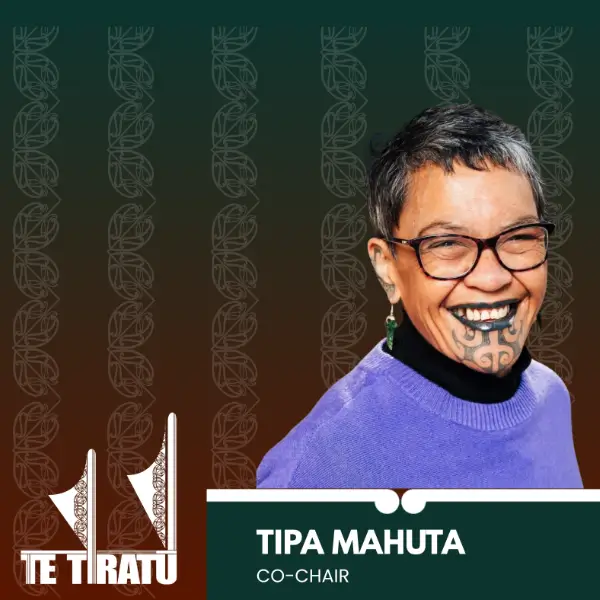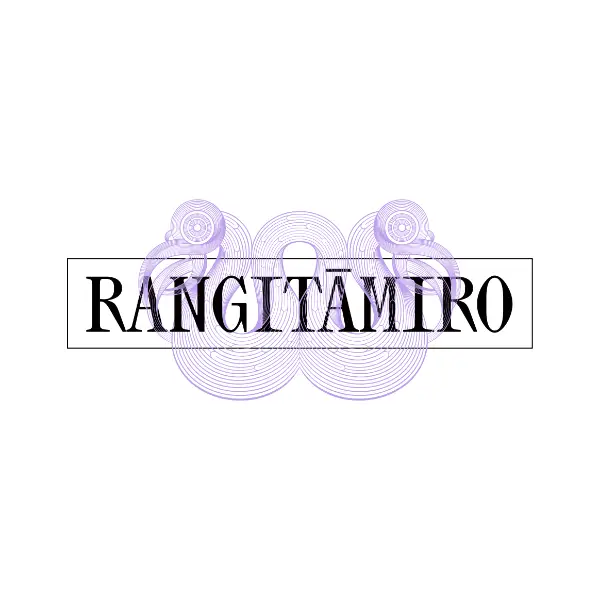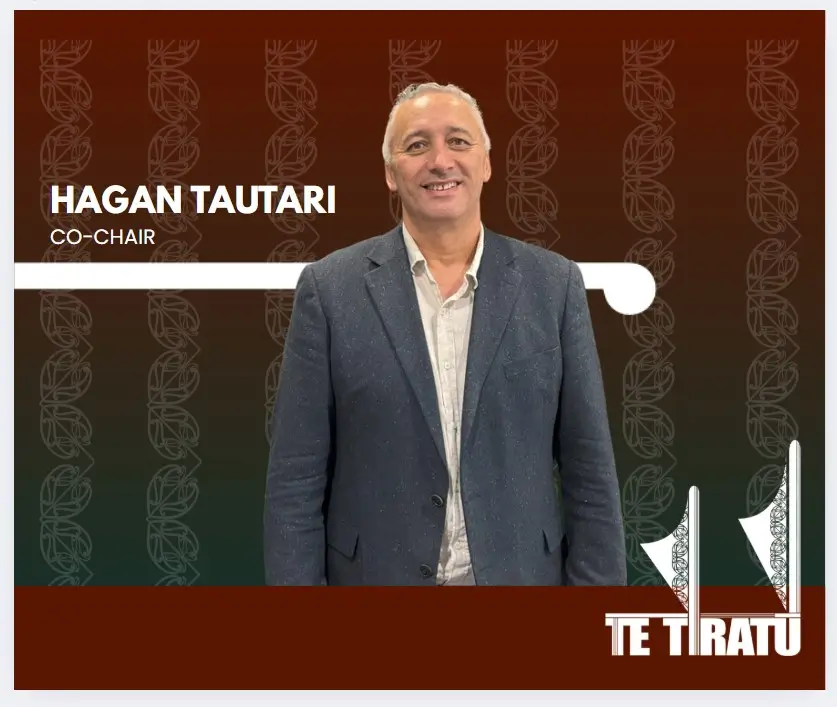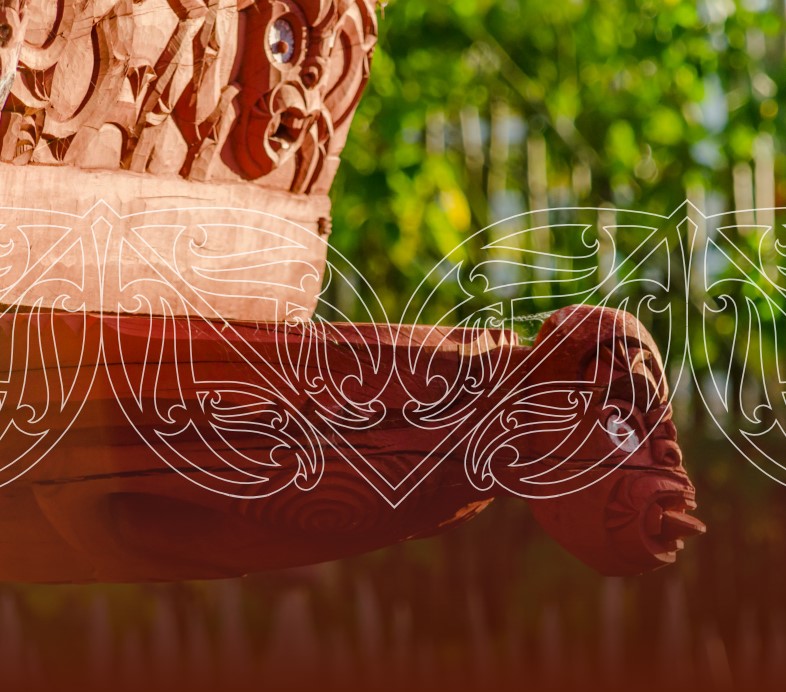Rangatahi Māori mental health in rural Waikato is in crisis
MEDIA STATEMENT
FOR IMMEDIATE RELEASE
Tuesday 23 September 2025, 4:00 PM
2 minutes to Read
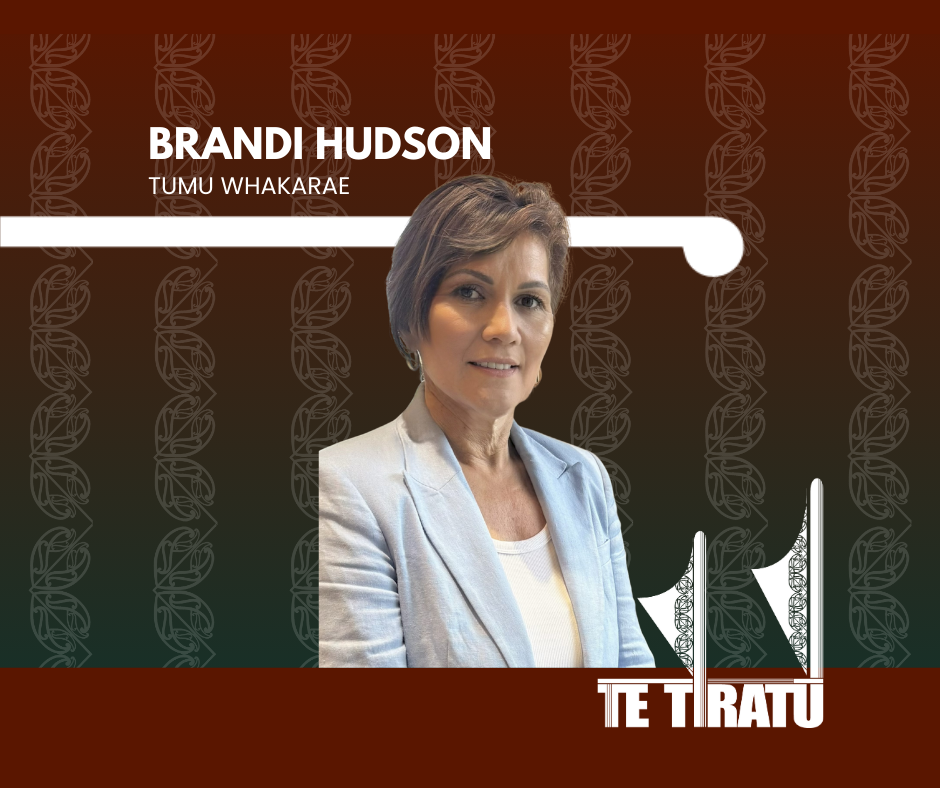
Despite the government’s ambitious July 2024 mental health and addiction targets, rangatahi Māori in rural Waikato are falling through the cracks. Te Whatu Ora Health New Zealand data with evidence from Te Tiratū Iwi Māori Partnership Board and local whānau voices shows that services are under-resourced, overstretched, and failing to meet the standards set by the government to monitor of health system performance by the Ministry.
National government targets include:
- Faster access to services: 80% of individuals to reach primary mental health and addiction services within one week, and mental health specialist services within three weeks.
- Emergency department efficiency: 95% of mental health-related ED presentations admitted, discharged, or transferred within six hours.
- Workforce development: Train 500 new mental health professionals annually.
- Prevention and early intervention: Allocate 25% of mental health funding to prevention.
Reality on the ground in rural Waikato:
- Over 200 tamariki/rangatahi have open referrals, with waitlists rising steadily since 2023 including 10 per month waiting for ADHD assessments and 21 for other mental health services.
- Frequent crises: Average of 10 crisis contact days per month, with 79 under-25s admitted to Henry Rongomai Bennett Centre since 2021 (average stay 14 days).
- Rural workforce gaps: Schools and providers rely on Police, St John, and Women’s Refuge to manage crises, far beyond their scope. Psychiatrists, psychologists, and counsellors are largely unavailable locally.
- Prevention funding gaps: Iwi- and whānau-led programmes like Hauora Waikato, Te Awhi Whānau, and Puāwai Project are underfunded despite proven success in building resilience and wellbeing.
“Our rangatahi are simply falling through the cracks,” says Brandi Hudson, Te Tumu Whakarae of Te Tiratū IMPB.
“The government has set clear targets, yet in rural Māori communities we are seeing long waits, repeated crises, and preventable hospitalisations. Immediate, targeted, and culturally grounded investment is not optional, it is urgent. I will be raising these issues directly with Minister Doocey when he visits Te Kūiti on Wednesday as part of his Rural Roadshow.”
Te Tiratū is calling on the government to prioritise early intervention and prevention for rural Māori youth, expand workforce capacity in King Country and other rural areas, fully resource iwi- and whānau-led programmes that are already proving effective, and ensure funding reaches the communities most at risk, not just metropolitan centres.
Without urgent action, the mental health crisis among rangatahi Māori will worsen, with devastating long-term consequences for whānau, communities, and the health system.
The Te Tiratū Iwi Maori Partnership Board represents the interests of 121,000 whānau Māori in the Tainui waka rohe and encompasses iwi from Waikato, Pare Hauraki, Raukawa, Te Nehenehenui (Maniapoto), Ngāti Hāua (Taumarunui), and Te Rūnanga o Kirikiriroa (Mātāwaka).
Minister Doocey will be at the Les Munro Centre in Te Kūiti for the Rural Roadshow from 12pm-1.30pm tomorrow.
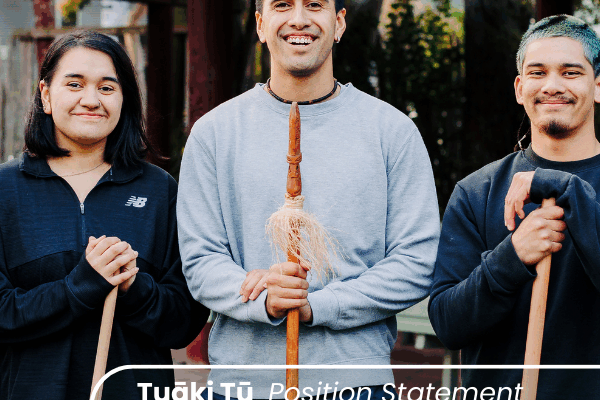
Our strong warning that rangatahi Māori in rural Waikato are facing a mental health crisis.
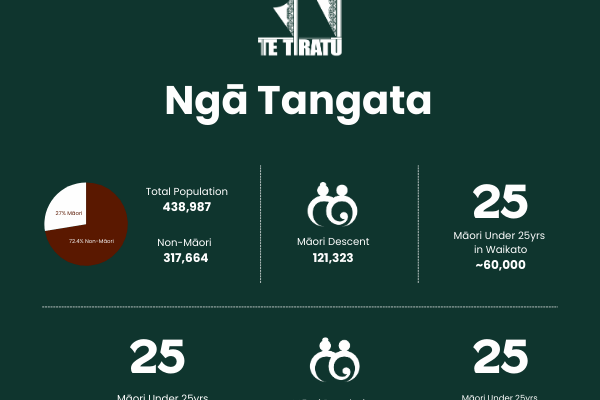
Read the statistics Te Tiratū has gathered specifically for our Tainui waka rohe.
Glen Tupuhi appointed Co-Chair of Te Tiratū Iwi Māori Partnership Board
MEDIA STATEMENT
FOR IMMEDIATE RELEASE
Tuesday 23 September 2025, 9:00 AM
2 minutes to Read
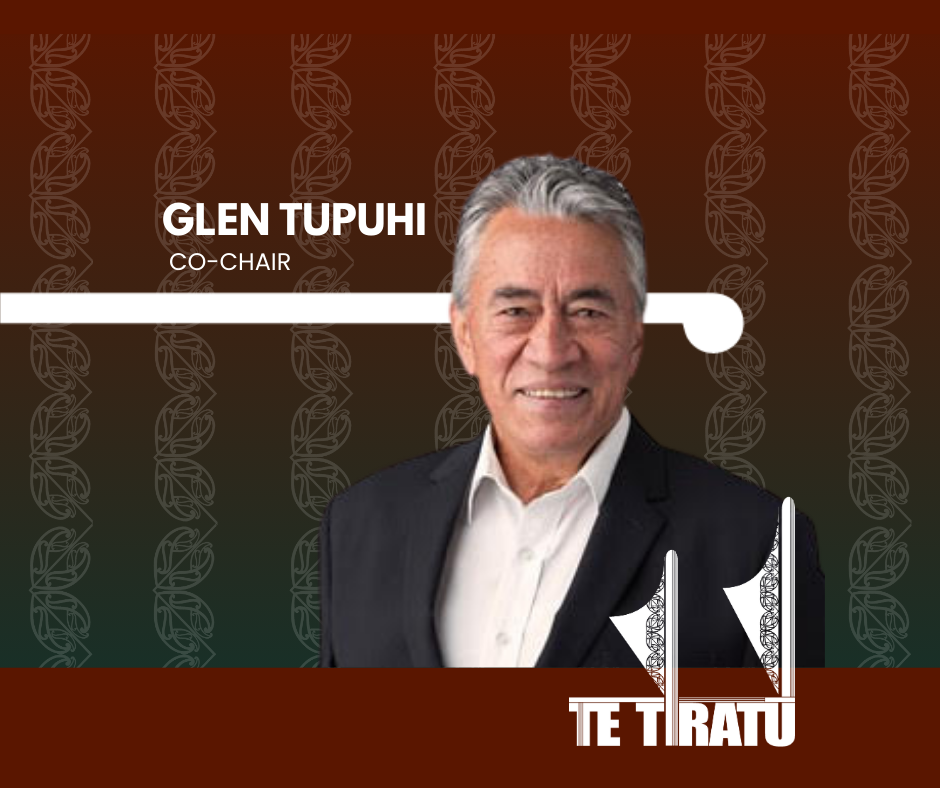
Te Tiratū Iwi Māori Partnership Board (IMPB) representing 121,000 whānau across the Tainui waka region and one of the largest of the 15 Iwi Māori Partnership Boards established under the Pae Ora (Healthy Futures) Act is pleased to announce the appointment of Glen Tupuhi as Co-Chair.
He replaces Hagen Tautari, who has provided strong leadership and guidance governing to date. Tipa Mahuta, current Co-Chair, expressed her gratitude for Hagen’s service.
“On behalf of Te Tiratū IMPB, we sincerely thank Hagen Tautari for his dedication and commitment to the kaupapa, our whānau, and the wider Māori community. We are delighted to acknowledge Glen Tupuhi as our new Co-Chair and look forward to his leadership in guiding the Board forward,” she said.
From his time as chair of the Murihiku Māori Health Committee of the Southland Area Health Board in the mid 1980’s Glen brings over 35 years of governance experience across the Māori development, health, education, and justice sectors. His extensive background includes Iwi Hapuu Marae leadership roles as well as managerial roles in Oranga Tamariki, Corrections, Health Waikato, Hauora Waikato, and Te Rūnanga o Kirikiriroa. He has also served on the Auckland Council Independent Māori Statutory Board and the Māori Economic Development Panel.
Currently, he holds multiple governance roles, including:
- Independent Director, Winton Lands Ltd
- Board Member, Te Korowai Hauora o Hauraki and the Hauraki PHO
- Chair, Hauraki Localities Alliance
- Until recently Trustee of Ecoquest Education Foundation PTE and chair, Ngaa Muka Development Trust
A seasoned leader in integrating cultural perspectives with commercial decision-making, as chair of Ngaa Muka Glen has successfully guided iwi partnerships in projects across North Waikato such as Cobb Vantress chicken breeding plant, Lakeside development in Te Kauwhata and the initial establishment of the Sleepyhead Estate at Ohinewai, a $1.2 billion mixed-use industrial and residential development in North Waikato.
Glen’s iwi affiliations include Ngāti Pāoa ki Waiheke, Tamaki Makaurau, Hauraki, Waikato, Ngāti Hine, Ngāti Naho o Waikato, Ngāti Rangimahora, and Ngāti Apakura. His leadership philosophy emphasizes collaboration, strategic oversight, and creating sustainable opportunities for whānau and communities.
In addition to his professional and governance work, Glen continues to support whānau trusts and philanthropic initiatives, including the Whakatupu Aotearoa Foundation, fostering system-level change for communities and the environment in Aotearoa.
His appointment reflects Te Tiratū IMPB’s ongoing commitment to strong, culturally-informed governance, and the Board looks forward to the expertise, guidance, and leadership he will bring in advancing the aspirations of iwi and whānau across the region.
The Board encompasses iwi from:
- Waikato
- Pare Hauraki
- Raukawa
- Te Nehenehenui (Maniapoto)
- Ngāti Hāua (Taumarunui)
- Te Rūnanga o Kirikiriroa (Mātāwaka)
Proposed Pae Ora reforms lack evidence & crown’s Te Tiriti partnership with iwi non-negotiable
MEDIA STATEMENT
FOR IMMEDIATE RELEASE
Friday 1 September 2025, 8:00 AM
2 minutes to Read
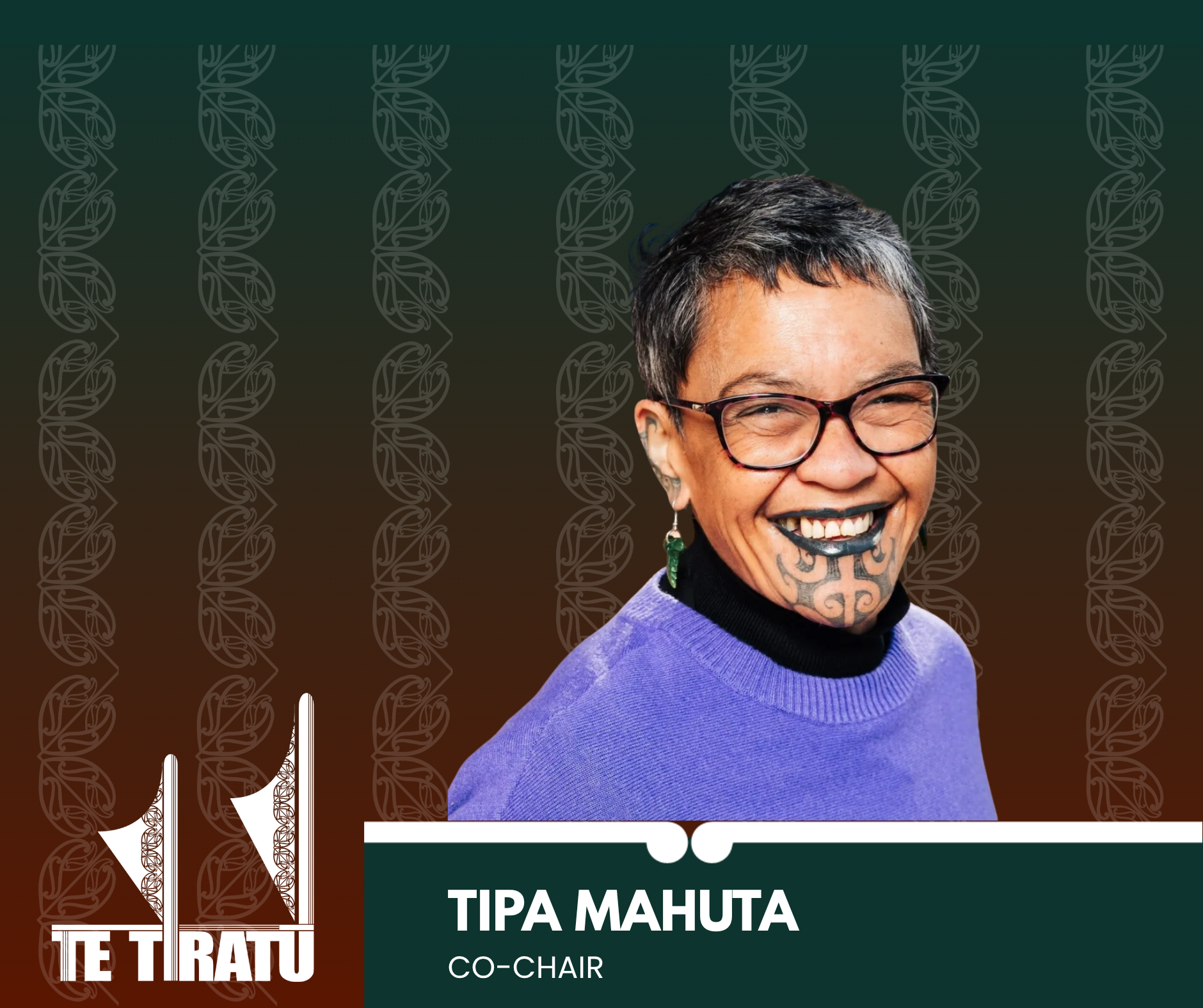
Te Tiratū Iwi Māori Partnership Board (IMPB), representing over 121,000 Māori across the greater Waikato region, will present its submission opposing proposed changes to the Pae Ora (Healthy Futures) Act on Wednesday 3 September at 1.00pm.
One of fifteen Iwi-Māori Partnership Boards across Aotearoa, Te Tiratū stands united against proposed Pae Ora changes that would strip Te Tiriti protections, curb Māori decision-making, and deepen health inequities.
The Board warns that altering the roles and functions of IMPBs under Section 30 would undermine the Government’s commitments to Te Tiriti o Waitangi, equity, and meaningful Māori participation in health decision-making.
“Our leadership, knowledge, and influence are already delivering tangible results for whānau Māori,” said Co- Chair Tipa Mahuta. “The proposed reforms are not supported by evidence or Māori health data and risk reversing progress on improving outcomes for our communities.”
Te Tiratū highlights that IMPBs play a critical role in local and regional health planning, monitoring, and prioritisation, ensuring Māori voices and mātauranga Māori are central to decisions. Through initiatives such as the Community Health Plan and ongoing monitoring reports, IMPBs provide actionable insights to Health NZ and other agencies to drive better outcomes and stronger returns on taxpayer investment.
The Board points to decades of Māori-led success in health services, including the rapid and effective COVID-19 response, demonstrating that locally-led, iwi-driven solutions outperform traditional government approaches. Yet, Māori health inequities persist, with ongoing gaps in cancer screening, access to primary care, and chronic disease management. IMPBs are uniquely positioned to be the circuit-breaker to these long-standing disparities.
Te Tiratū also notes that the Government’s broader economic goals, including the “Going for Growth” Māori economic strategy, depend on healthy, supported whānau. IMPBs, if empowered, can drive innovation, workforce development, and local investment in health infrastructure, further supporting Māori economic growth.
“The Crown’s duty to partner with iwi under Te Tiriti o Waitangi is non-negotiable,” said Mahuta. “IMPBs must retain their legislated functions. Removing or diminishing our role risks repeating decades of systemic failure and wasted taxpayer resources.”
Te Tiratū urges the Minister of Health and Government to uphold Section 30 of the Pae Ora Act, ensuring IMPBs continue to lead, influence, and transform Māori health outcomes.
Third medical school must deliver for Māori – Te Tiratū welcomes $83M Waikato investment
MEDIA STATEMENT
FOR IMMEDIATE RELEASE
Friday 22 July 2025, 8:00 AM
2 minutes to Read
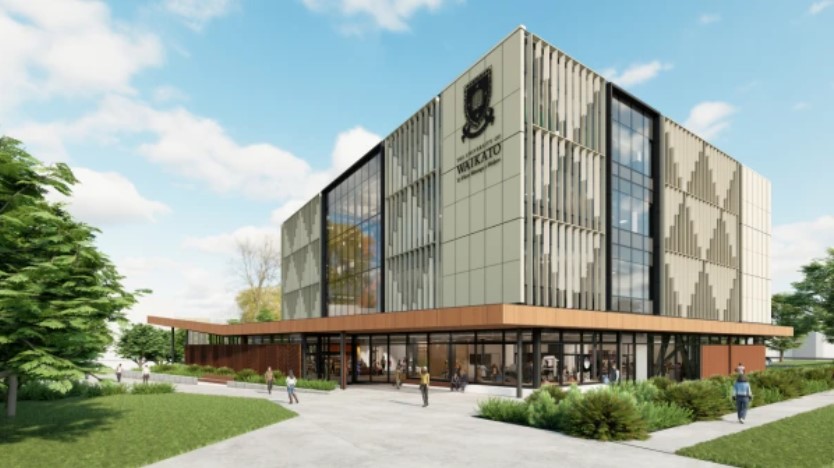
Image credit: Waikato Te Whare Wānanga o Waikato. An artist’s impression of the new Division of Health Precinct, which will be home to the New Zealand Graduate School of Medicine at the Hamilton campus.
Te Tiratū Iwi Māori Partnership Board representing 114,000 whānau Māori in Tainui waka rohe welcomes the Government’s announcement of $83 million in public funding, alongside philanthropic and university support, for the new Graduate School of Medicine at the University of Waikato Te Whare Wānanga o Waikato.
This investment marks a significant opportunity to address long-standing health inequities and workforce shortages in our region—especially for rural, Māori and underserved communities.
But this can only be realised if Māori health workforce development, cultural safety, and equity are embedded as foundational pillars in the new medical school’s design, training model, and governance.
“Whānau across Waikato have told us time and again: they want to see more Māori health professionals—people who understand our values, our lived experiences, and our ways of being as Māori,” said Tipa Mahuta co-chair of Te Tiratū Iwi Māori Partnership Board.
Māori currently make up less than 5% of the medical workforce, despite representing around 17–18% of the total population — a stark gap that highlights the urgent need for a more representative and equitable health system.
“Cultural safety is not a nice-to-have. It is essential to clinical excellence, trust, and good health outcomes. If patients don’t feel safe, they disengage—and that can cost lives,” Mahuta added.
The Te Tiratū Community Health Plan, Priorities Report, Monitoring Report, and Whānau Voice insights highlight critical barriers to care in the region:
- A lack of Māori-led service delivery options
- Inadequate rural and specialist services
- Persistent racism, judgement and cultural disconnection in some mainstream settings
Whānau are calling for a health system that is fair, accessible and reflective of the communities it serves. This means:
- A representative medical workforce that includes more Māori doctors, nurses, prescribers, dental/oral health professions, midwifes, therapists, mental health clinicians, sonographers, pharmacists, radiologists, anaesthetic technicians and specialists
- Clinical training of doctors grounded in kaupapa Māori values and culturally safe practice
- Data transparency and partnership with iwi and IMPBs in shaping workforce investment decisions
- Recognition of all hauora roles—from kaiawhina to clinicians—as part of a thriving Māori health ecosystem
As of 30 June 2025, there are 3,991 Māori registered with the Kia Ora Hauora the Māori health workforce development programme nationally. 240 identify with at least one iwi from Waikato. Yet many are still met with barriers, not bridges, into medical and health professions.
Te Tiratū urges the Government, Te Whatu Ora Health New Zealand, Hauora Māori Directorate and the University of Waikato to work closely with iwi, hapū and community partners to shape a graduate school that delivers on its promise—not only to grow the GP workforce of clinical placements across the country, but to heal a system given Māori die on average at least 7 years before non-Māori.
“We cannot miss this moment. A third medical school must reflect a third way—a culturally grounded, equity-driven, future-facing model of training that serves all New Zealanders, starting with those most underserved,” co-chair of Te Tiratū Iwi Māori Partnership Board, Hagen Tautari said.
Te Tiratū stands ready to partner and contribute to the new ‘Division of Health’ health precinct opening on the University of Waikato Te Whare Wānanga o Waikato campus.
The Board, under its statutory role in accordance with the Pae Ora Act, actively reflects and advocates for local Māori views on how public health services and public health initiatives are shaped and implemented.
The Board represents the whānau of Pare Hauraki, Waikato, Raukawa, Te Nehenehenui, Ngāti Hāua (Taumarunui) and Te Rūnanga o Kirikiriroa from the localities of Waikato, Hauraki, Maniapoto, Raukawa, Ngāti Hāua.

Kia Ora Hauora sees Waikato Tainui as a key strategic Iwi relationship within the Waikato region.

Programme Statistics – see overall Kia Ora Hauora statistics and statistics for Te Tiratū specifically.
Day one, same kaupapa: whānau ora thrives through Rangitāmiro
MEDIA STATEMENT
FOR IMMEDIATE RELEASE
Tuesday 1 July 2025, 6:00 AM
2 minutes to Read

The legacy of Dame Tariana Turia will continue to thrive under the new Whānau Ora Commissioning Agency, Rangitāmiro, for Te Tai Tokerau, Tāmaki Makaurau, Waikato, Hauraki and Tuwharetoa from today.
Rangitāmiro is a consortium of Te Tiratū Iwi Māori Partnership Board, National Hauora Coalition (NHC), and Ngaa Pou Hauora oo Taamaki Makaurau (Ngaa Pou Hauora).
Rangitāmiro Board Chair Eru Lyndon acknowledged the substantial responsibility of continuing Whānau Ora.
“The late Dame Tariana Turia led the remarkable legacy of Whānau Ora that encompasses the crucial journey of growing whānau capacity capability and independence. Dame Tariana was steadfastly focused on empowering whānau to reclaim authority of their situation, to determine the solutions that impact them and the generations to come. Starting today and continuing, Rangitāmiro is committed to Dame Tariana’s vision with heightened concentration and unwavering dedication to whānau.”
Rangitāmiro has the largest population of the four new commissioning agencies and board member Dr Rachel Brown said they’re operational.
“We’re building on the success of Whānau Ora commissioning agencies and the great work
that’s been done. They’ve benefited whānau – they’ve benefited my own whānau. The project team have been working tirelessly over the past few months on the transitional process with existing and new partners. We have contracted 301 new full time employees, an increase of 120 kaimahi allowing us to reach even more whānau than before with minimal disruption to meet the deep need from Tuwharetoa to the Far North. These are staggering results in a very constrained timeframe that shows our dedication to the kaupapa and allegiance to Whānau Ora.”
Board member Dr Mataroria Lyndon, who is also a Board member of Te Tiratū brings a wealth of knowledge to the Rangitāmiro board and he is confident the new commissioning agencies will help improve whānau outcomes across Aotearoa.
“I mihi to all of the new commissioning agencies who put their hands up to continue this extraordinary mahi delivering Whānau Ora support. It’s evident that, despite it being our first day, it’s not our first experience with this kaupapa. We’ve been working with whānau for decades, and we’re resolute in taking those values, alongside the powerful legacy of Dame Tariana, forward into the future for our respective regions. Dame Tariana had always spoken of the importance of mahitahi, whanaungatanga, and manaakitanga for Whānau Ora.”
Te Tiratū releases first “confronting” monitoring report on health system
MEDIA STATEMENT
FOR IMMEDIATE RELEASE
Friday 27 June 2025, 6:00 PM
2 minutes to Read

Te Tiratū Iwi Māori Partnership Board has released its inaugural Monitoring Report — a 46-page document under Section 30(1) of the Pae Ora Act 2022 that holds a mirror up to the system and asks two urgent questions: Is it working for us? And is it honouring Te Tiriti o Waitangi?
“This isn’t just data,” says Te Tiratū Co-Chair Tipa Mahuta. “It’s a reflection of what our whānau are actually living through every day — and it’s hurting them. The gap between policy promises and real-life outcomes is still too wide. Te Tiriti o Waitangi must be upheld in practice, it’s not a nice to do – it’s a must do.”
“Top of mind for our Board is the toll of cardiovascular, respiratory, and renal disease on our people which is simply devastating. Too many of our whānau are dying from preventable conditions — on average, seven years earlier than anyone else in the country.”
Representing 114,000 whānau across the Tainui waka rohe, Te Tiratū has drawn on lived experience from Whānau Voice surveying in the community, very limited data from Te Whatu Ora Health New Zealand, and legislative benchmarks to track system performance— and the findings are both sobering and clear – equity remains out of reach for too many Māori.
The report evaluates how well the system is delivering based on Te Tiratū’s regional health priorities, the five Government health targets, and Te Whatu Ora Health New Zealand’s statutory obligations under the Pae Ora (Healthy Futures) Act 2022.
It arrives at a pivotal time, as the Crown signals more major changes — including proposed amendments to Pae Ora after the disestablishment of Te Aka Whai Ora Māori Health Authority in its first 100 days.
“What we found in the report is confronting. Despite isolated gains — such as in mental health and addiction services — inequity remains entrenched. Our whānau continue to face multiple barriers to care, including cost, distance, culturally unsafe services, and long wait times,” said Mahuta.
Cancer screening rates for Māori remain far below national targets, and many Māori are missing out on essential primary care. Data is either missing or incomplete across key health areas like immunisation, oral health and long-term conditions — making it nearly impossible to track improvements or hold the system accountable.
The report also highlights that Te Whatu Ora Health New Zealand is falling short on many of its Pae Ora legislative obligations. Authentic iwi partnership in governance and decision-making is minimal or missing altogether.
Hauora Māori providers, while delivering high-trust, culturally grounded services, remain constrained by funding inequities and fragmented, siloed contracting systems.
Te Tiratū has sent the monitoring report to both Te Whatu Ora Health New Zealand and the Hauora Māori Advisory Committee and invited them to use the findings to shape advice to Minister Brown on investment, governance, and policy affecting Māori.
“We’ve seen what’s possible when whānau are listened to and resourced properly — particularly in areas like renewing the successful childhood immunisation programme run by Māori providers,” Mahuta said.
“Now we need to scale that success. We remain committed to advocating for a health system that is fair, accessible, and equitable — one that reflects the rights, needs and aspirations of our people.”
Rural Māori at risk: Unsafe hospital job share called out
MEDIA STATEMENT
FOR IMMEDIATE RELEASE
Thursday 26 June 2025, 3:00 PM
2 minutes to Read
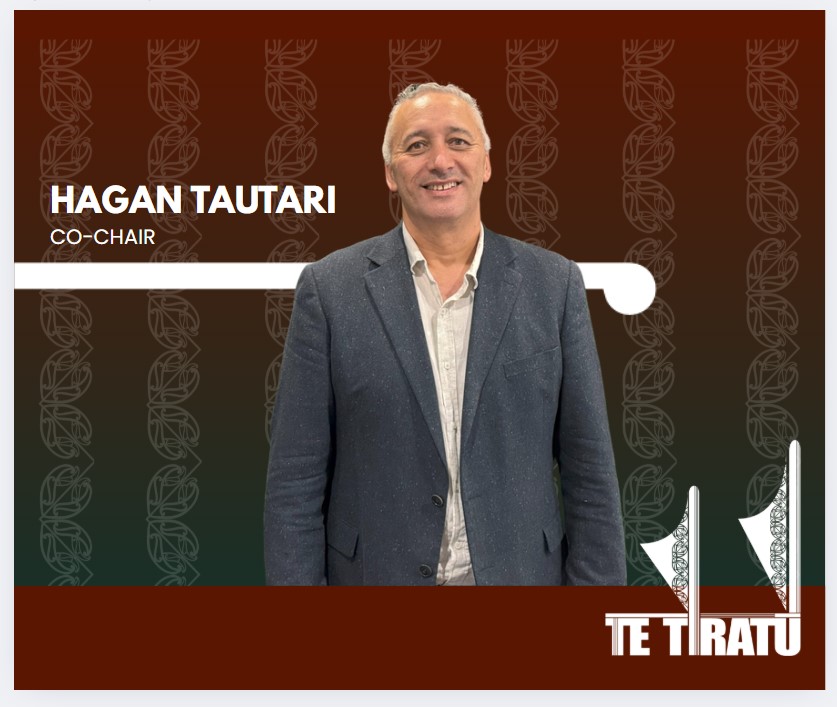
Te Tiratū Iwi Māori Partnership Board representing 114,000 whānau in Tainui waka rohe is calling for a full review of an integrated cleaner-security staffing model in two rural Waikato hospitals which serve communities with high Māori populations.
The Board was alerted by media reports about Te Whatu Ora Health New Zealand’s decision, which raised serious concerns regarding patient and staff safety, as well as the practicality of merging the roles.
Implemented at Te Kuiti and Tokoroa hospitals, the model combines the roles of hospital cleaner and security officer — a move that has been called “a life-or-death matter”.[1] These hospitals that sit within Te Tiratū Iwi Māori Partnership Board’s rohe are directly relevant to its work to ensure that Māori have a real say in local health design, delivery, and decision-making.
“Rural Māori communities should not be treated as testing grounds for potentially unsafe and ill-conceived workforce experiments. It is time for Te Whatu Ora Health New Zealand to put the safety and dignity of our people first and uphold the principles of Te Tiriti o Waitangi,” said Hagen Tautari, co-chair of Te Tiratū Iwi Māori Partnership Board.
It reflects a wider systemic failure to uphold Te Tiriti o Waitangi and engage iwi as genuine partners in health governance. At its heart it’s about how the Crown treats mana whenua in the decisions that directly impact whānau – and how it involves the Treaty partner at a locality as an equal.
A recent Te Whatu Ora Health New Zealand review confirms that while cleaning duties were being carried out, security coverage was inadequate and staff felt unsafe, particularly during overnight shifts where only two nurses and one cleaner-security officer are present.
“This staffing model fails our people, healthcare professionals and hapori. It undermines basic safety, disrespects the skill of both roles, and ignores the lived realities of rural hospitals — where Māori make up a significant proportion of patients and staff,” Tautari added.
Key concerns highlighted by Te Tiratū Iwi Māori Partnership Board include:
- Safety is non-negotiable. It is a matter of time before preventable harm occurs. Staff cannot be in two places at once during critical incident and expecting them to compromise both patient and worker safety.
- It’s a false economy. The model was meant to save over $200,000 in its first year. It only saved $137,000 — a shortfall that cannot justify the identified safety risk and workforce dissatisfaction.
- Rural Māori carry the burden. This model would not be trialled in larger urban hospitals. That it has been tested in predominantly Māori rural communities is a breach of equity and justice.
- Lack of consultation with Treaty partner. Health NZ must uphold its Te Tiriti obligations to work in partnership with Māori – which is not optional, symbolic, or after-the-fact.
Te Tiratū Iwi Māori Partnership Board is now calling on Te Whatu Ora Health New Zealand to commit to a community-informed review that centres safety, wellbeing, and equity, invest in separate, skilled roles for security and cleaning that are fit for purpose and protect whānau, support staff and nurses in rural hospitals through properly resourced, safe, and sustainable models of care.
[1] https://www.rnz.co.nz/news/national/564931/hospital-staff-concerned-about-combined-cleaner-security-officer-roles
Partnership, not centralisation in Pae Ora health reforms
MEDIA STATEMENT
FOR IMMEDIATE RELEASE
Tuesday 24 June 2025, 10:00 AM
2 minutes to Read

Te Tiratū Iwi Māori Partnership Board is concerned over proposed legislative reforms to the Pae Ora (Healthy Futures) Act 2022 that removes the current direct role of Iwi Māori Partnership Boards (IMPBs) in shaping the local health service design and delivery.
Stripping IMPBs of their decision-making authority and reducing our role to that of a ‘consultative’ body risks undermining the spirit and intent of Pae Ora, weakening community-led health leadership, and falls well short of the Crown’s obligations under Te Tiriti o Waitangi,” said Hagen Tautari, co-chair of Te Tiratū Iwi Māori Partnership Board.
“Te Tiriti is a constitutional foundation. Reforms must reflect the Crown’s enduring duty to uphold Te Tiriti obligations in both law and practice, not through policy alone.”
The sentiment is also shared by the larger Te Manawa Taki IMPB collective that comprises of Te Tiratū, Tairāwhiti Toitū Te Ora, Te Moana a Toi, Te Taura Ora o Waiariki, Tūwharetoa, and Te Pūnanga Ora.
The rōpū has called for the legislative changes to enter a formal co-design phase with Iwi Māori Partnership Boards and asked the Minister for urgent clarification on:
- How IMPBs’ Community Health Plans will influence service outcomes under the new framework
- What mechanisms will ensure IMPBs retain their role in local service design
- How the Crown will ensure accountability and transparency without undermining Tiriti-led governance
While Te Tiratū supports the Minister’s back-to-basics approach putting patients first and stated goal of timely, quality healthcare for all New Zealanders, Tautari says the proposals risk centralising decision-making in Wellington which would erode decades of hard-won progress trying to improve health outcomes for highest-need group in New Zealand’s health system.[1]
A letter to the Minister has been penned and endorsed by the Te Manawa Taki IMPB collective providing constructive feedback and solutions. It supports reforms that strengthen national oversight and equity outcomes – including the proposed expansion of the Hauora Māori Advisory Committee (HMAC) – but only if they are adequately resourced and do not displace the unique, community-based role of IMPBs.
“Partnership is not a principle to be referenced in policy—it is a constitutional obligation that must be upheld in law and practice,” said Tautari. “The voices of our whānau are strongest at the local level, where services are delivered, where the gaps are being identified by Whānau Voice and where IMPBs are making a real difference.”
The Board points to recent success in Te Moana a Toi, a member of te Manawa Taki IMPB collective where the regional IMPB worked alongside Whakatāne Hospital to address critical maternity service issues, delivering faster solutions than waiting on national intervention.
“Equity comes from working alongside whānau, listening to communities, and enabling local solutions. The reforms must protect that,” Tautari said. Reiterating the Board’s commitment to working constructively with the Government to ensure the health system delivers better, more equitable outcomes for Māori and all New Zealanders.
[1] Pg23-24 https://forms.justice.govt.nz/search/Documents/WT/wt_DOC_195476216/Hauora%202023%20W.pdf
Uncompromising call to govt on Budget 2025
MEDIA STATEMENT
FOR IMMEDIATE RELEASE
22 May 2025, 12:00 PM
2 minutes to Read
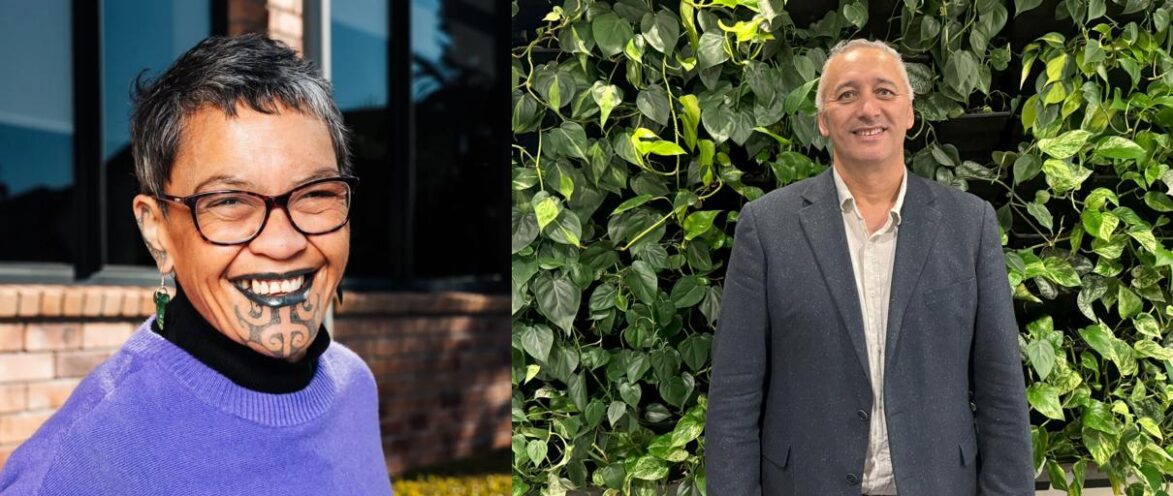
[Photo: Tipa Mahuta and Hagen Tautari, co-chairs of Te Tiratū Iwi Māori Partnership Board]
The Te Tiratū Iwi Māori Partnership Board, the statutory voice for 114,000 whānau Māori across the central North Island, is issuing an uncompromising call to the Government: make Budget 2025 a decisive turning point so the health system is timely and accessible for whānau.
The Board is calling for urgent action and bold direct investment in Māori-led, community-based health services — warning that failure to do so will mean continued whānau premature death from preventative disease, entrenched hardship and inequity across the rohe.
Board co-chair Hagen Tautari said, “We hear it from our people every day — the system is not meeting the needs of our whānau who top the table in terms of mortality and morbidity statistics.”
He acknowledged steady progress in key service areas — particularly newborn enrolment, early intervention, and screening coverage across the Tainui Waka rohe. However, he stressed that falling immunisation rates and long specialist wait times now demand urgent attention.
“Whānau are waiting months — even years — for essential care. Many needing to access services beyond a GP clinic are forced to travel vast distances, bear unaffordable costs, or give up altogether because the system isn’t designed for them — culturally, practically, or equitably. It’s not just unjust — it’s deadly. This failure is costing lives.”
Evidence from Whānau Voice surveys, the Board’s monitoring mechanism on Te Whatu Ora Health New Zealand reveals that Māori communities across the Te Tiratū region — spanning from Waikato to Hauraki, from Te Kuiti to Kawhia and especially the surrounding rural settlements — continue to face persistent, systemic failures in accessing even basic health care.
“Since June 2023, I’ve been on a waitlist for gallbladder surgery. This one condition is stopping me from getting back to work,” said one Tokoroa-based whānau. “My partner needed someone to talk to. There was no mental health support for him. Nothing,” shared another. “As a teacher here in Tokoroa, I don’t think there’s enough on offer for our tamariki in terms of mental health.”
Tautari believes these stories are not isolated — they are representative of widespread experiences shared by whānau across the rohe that are leaving them frustrated, overlooked and unsure on where to get help.
Even the government’s recent pre-announcement of a funding boosts for 24-hour urgent care in selected locations, Ōpōtiki—part of the Te Manawa Taki region where Te Tiratū operates—was overlooked despite having a clear need and geographic isolation. As a result, the lack of accessible services continues to place whānau lives at risk.
The resounding call from the flaxroots is clear: more GPs, more specialists, shorter wait times, and longer appointments. “We need to be able to see a doctor the same day — not in two weeks. You could be dead by then,” said whānau from rural Waikato.
Te Manawa Taki Central North Island Region: Delays, Disconnection, Causing Disadvantage
Whānau in the Te Tiratū catchment compared to the general population continue to face higher rates of cancer, diabetes, mental health conditions, and preventable illnesses — with poorer outcomes and shorter life expectancies.
These outcomes are worsened by the current service delivery experience:
- Surgery and specialist waitlists stretching months to multiple years
- Lack of local mental health support especially for tāne and rangatahi
- Shortages of GPs and specialists in rural and coastal communities
- Disjointed services that are not designed to reflect Māori cultural values, realities, or aspirations
From rural towns like Putāruru and Mangakino to coastal Ōpōtiki, many whānau struggle to access timely, affordable, and culturally safe health care. Services are stretched, under-resourced, and often located far from where whānau live.
- Teachers in Tokoroa are concerned about the lack of mental health services for students even though suicide rates for rangatahi are among the highest globally, and tamariki are more likely to experience barriers to accessing mental health services.
- Te Whatu Ora data for the Te Tiratū region indicates more whānau are now waiting over 4 months for their first specialist appointment. Delays in accessing timely care especially for rural and remote areas is worsening the health conditions for whānau and eroding their trust in the system. As a result, many are disengaging entirely — avoiding the very services meant to support them.
- In the western Bay of Plenty, whānau report long waits for referrals and specialist treatment in Hamilton, often delayed by transport, time off work, or simply unaffordable travel.
“Referrals wait times are really long!” said whānau. “We need doctors full-time — the same doctor, not locums that come and go,” said another.
Many reported being bounced between services, without follow-up, clarity, or support. “We’re constantly referred elsewhere. No one checks in. The system is disconnected, and people as a result fall through the cracks.”
Decades of Underinvestment: Now a Measurable Impact
This crisis is not new. Back in 2019 the Waitangi Tribunal released its Hauora Report on WAI 2575 matters that was further supported by the historic Sapere Report that calculated a $531 million longstanding underfunding experienced by Māori providers which still has not been addressed and compounding – six years later.
While Te Tiratū waits for the official details of the Budget 2025 commitments— such as a proportion of the allocated $6.8 billion capital spend on health and what the $190 million Social Investment Fund entails— there is no assurance that these will reach Māori communities unless targeted, ringfenced, and co-designed.
Te Tiratū urges the Government to:
- Deliver dedicated investment into kaupapa Māori and whānau-centred health models
- Address workforce shortages in GPs, mental health specialists, and kaiārahi/navigators across the rohe
- Guarantee equitable access to timely mental health care care for tamariki, rangatahi and tāne
- Uphold Te Tiriti o Waitangi in health system governance and decision-making
“What works for our whānau already exists. We just need the government to invest in it — as Māori-led care can deliver,” said Tipa Mahuta, co-chair of Te Tiratū Iwi Māori Partnership Board.
A local initiative already making a measurable difference is a community outreach pilot launched by BreastScreen Aotearoa, in partnership with Hauraki PHO, to connect under-screened wāhine through hospital and community pathways.
Equity Is Not a Luxury — It’s a Legal and Moral Obligation
Te Tiratū Iwi Māori Partnership Board believe whānau Māori across the Tainui waka rohe cannot afford more delays, trade-offs, or one-size-fits-all approaches.
“Equity is not optional — it is a Treaty commitment, and the path forward to sustainable wellbeing. Now is the time for genuine partnership — one that shares power, resources, and responsibility with Māori to achieve oranga for all.”
Data showing alarmingly low Immunisation rates, delays, costs still undermining Māori health
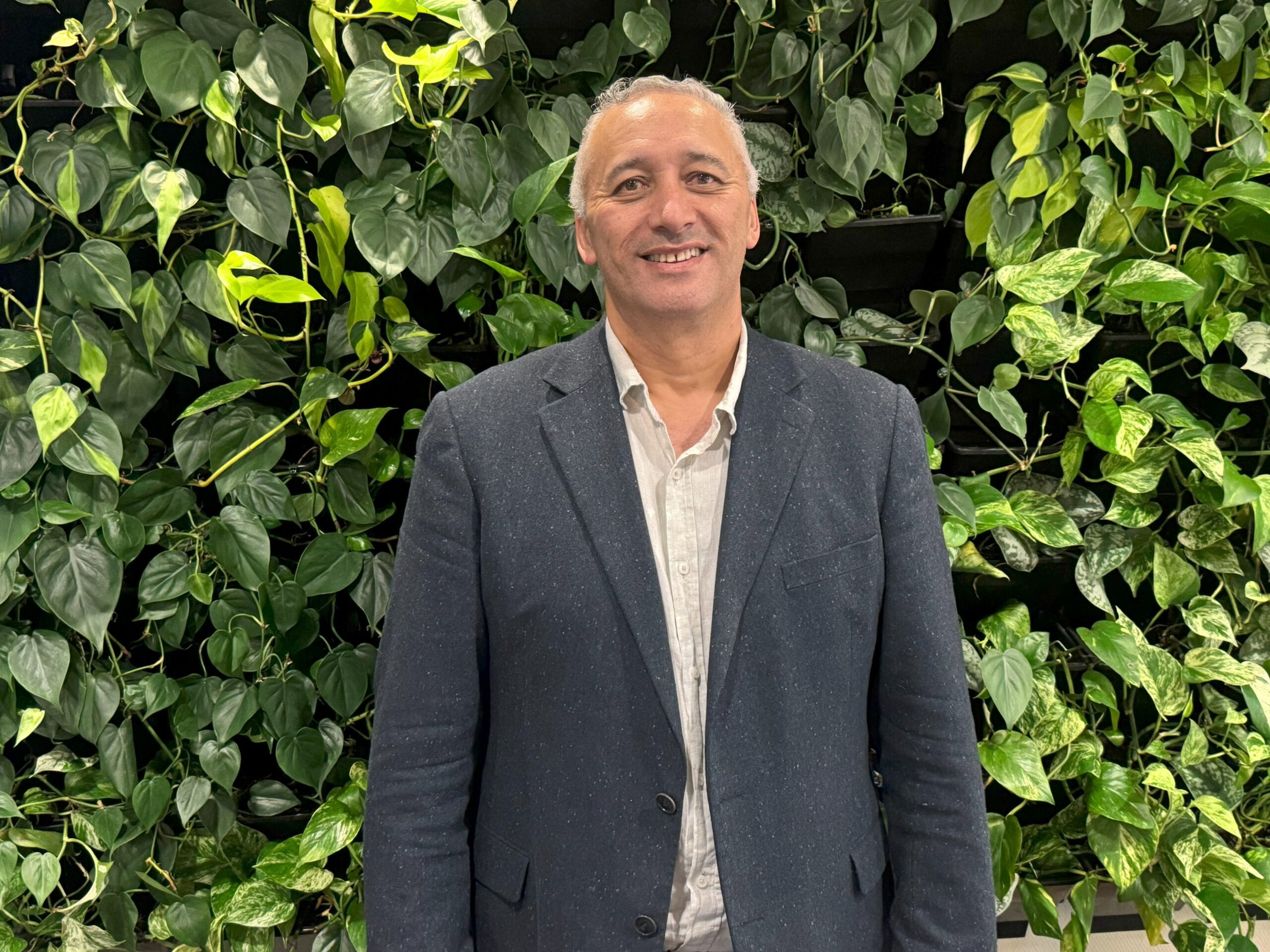
Photo: Co-chair of Te Tiratū Iwi Māori Partnership Board Hagen Tautari
Te Tiratū Iwi Māori Partnership Board April Whānau Voice Report mirrored by Te Whatu Ora data has evidenced immunisation rates 33% lower than the national average, widespread inequities, long wait times, and unaffordable care still plaguing whānau Māori in its Tainui waka rohe.
The Board, which holds legislative responsibilities under the Pae Ora (Healthy Futures) Act 2022 to represent Māori voices in health and monitor health system delivery of Te Whatu Ora, gathered lived experiences from 53 whānau across its rohe.
Behind every statistic is a whānau member struggling in silence.
The April Whānau Voice report revealed:
- 23% of whānau identified access to care—like GP appointments or surgeries—as their biggest barrier.
- 27% said cost was the major obstacle, forcing choices between essentials like kai and medication.
- 14% highlighted the need for more culturally safe, Māori-led care.
“Whānau are still waiting—too long—for care that should be timely and accessible,” said Hagen Tautari, co-chair of Te Tiratū Iwi Māori Partnership Board.
“One kuia told us her husband had life-saving heart surgery, but no specialist follow-up for almost a year. Another Māmā has waited two years for her child’s ear operation. These are not exceptions—they are systemic failures.”
Whānau are being left to manage complex conditions like diabetes, cancer, and heart disease with minimal support. Many avoid primary care due to cost and instead turn to overburdened emergency departments—even for non-urgent issues.
“We go to hospital because there’s nowhere else,” said another whānau.
In rural areas, lack of transport compounds the problem. Some whānau reported sitting in shuttle vans for hours to access basic services. Others gave up entirely.
Cultural safety also emerged as a major issue for whānau, ironically at a time when the government is looking to proactively remove cultural requirements from workforce regulation.
While Māori health workers were praised for their manaakitanga, whānau shared painful stories of clinical encounters with the non-indigenous workforce that lacked empathy, understanding, or cultural connection.
“We need more Māori nurses and doctors,” said one whānau. “They didn’t just treat us—they respected us.” But the report goes beyond what’s broken. Whānau were clear about what needs to change.

Photo: Raven Torea Whānau Voice kaimahi, of Te Tiratū Iwi Māori Partnership Board receiving whānau whakaaro
Priorities included:
- More doctors, more appointments, and reduced wait times (24%)
- Lower costs for basic care (27%)
- Improved transport and localised services (14%)
- More culturally grounded, Māori-led health care (14%)
- Better coordination between health services (13%)
- Holistic, whānau-centred support for housing, income, and wellbeing (10%)
Data from Te Whatu Ora for Waikato as at 31 December 2024 reinforces these concerns:
- HPV Vaccination rates for Māori aged 14 are only 46%, far from where they need to be to prevent sexually transmitted diseases and cervical cancer.
- Tamariki immunisation rates under 24 months are alarmingly low at 62%, well below the 95% national target, increasing the risk of preventable disease outbreaks.
- Emergency Department wait times are unacceptable: 27% of Māori wait over 6 hours before being admitted, transferred, or discharged—placing undue stress on kaumatua, māmā, and tamariki.
- For elective surgery, only 65% of Māori receive timely treatment, compared to 71% of Non-Māori—leaving 35% waiting over four months.
- Cancer screening rates are critically low:
- Bowel screening: only 46% for Māori aged 60–74
- Breast screening: 55% for wāhine aged 45–69
- Cervical screening: 58% for wāhine aged 25–69
- Cancer treatment within the 31-day target is met for only 62% of Māori, far below the 90% national goal.
“These numbers are not just data points—they’re warnings,” said Tautari. “They tell us that inequity is embedded and urgent.”
“Our care needs to reflect our world. Te ao Māori matters in healing,” one whānau member said in the Whānau Voice report.
Te Tiratū says the April report and supporting health data are a wake-up call to decision-makers across the motu. The stories and statistics are not just feedback—they are a call to action.
“We carry both a legal and moral obligation to ensure whānau voices are not only heard, but acted upon,” Tautari said.
“System change begins when we honour the truths our whānau are brave enough to share and cultivate service delivery grounded in manaakitanga, equity, and tino rangatiratanga.”
